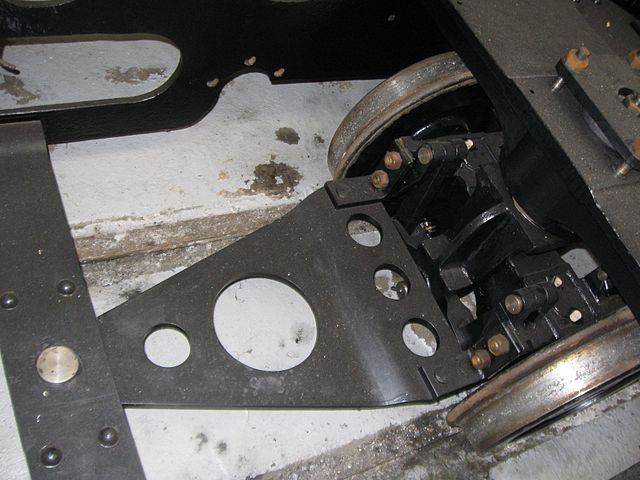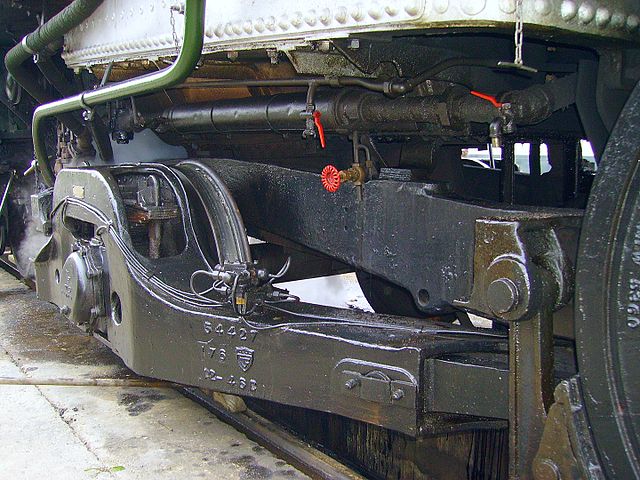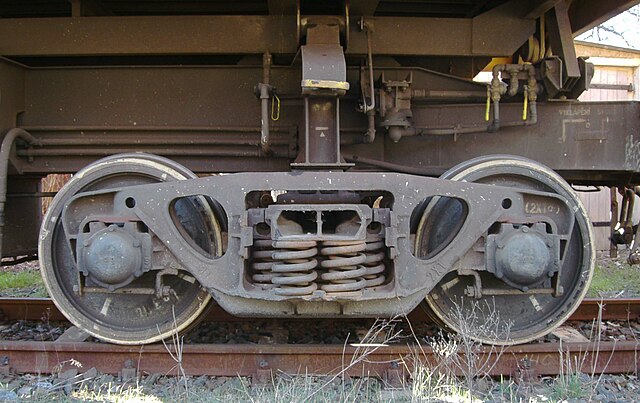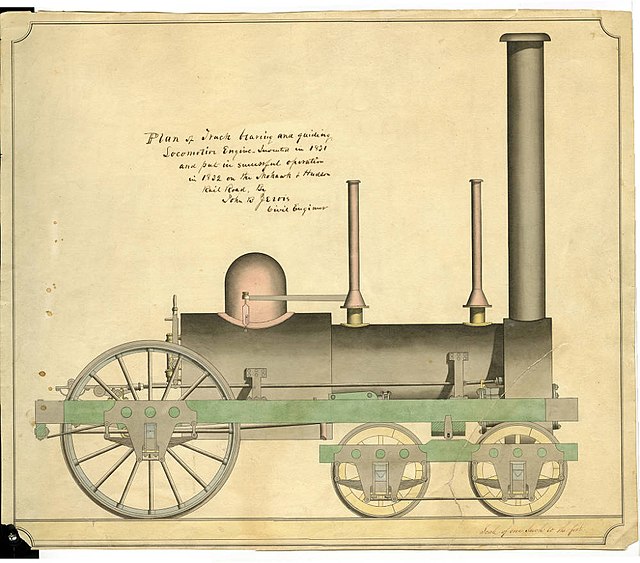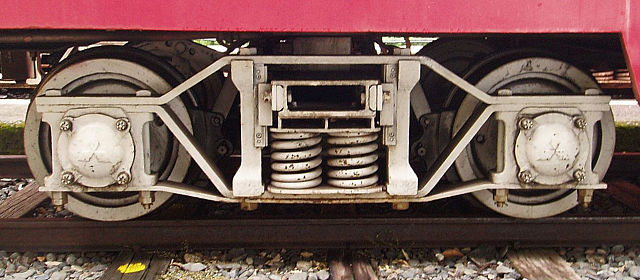A Bissell or Bissel truck is a single-axle bogie which pivots towards the centre of a steam locomotive to enable it to negotiate curves more easily. Invented in 1857 by Levi Bissell and usually then known as a pony truck, it is a very simple and common means of designing a carrying wheel.
Rear Bissel truck on the narrow gauge locomotive Russell
LNER Class V2 4771 Green Arrow showing pony truck in front of cylinders and driving wheels
Guide frame of a Bissel truck on French SNCF Class 141R1199 2-8-2 steam locomotive
A bogie is a chassis or framework that carries a wheelset, attached to a vehicle—a modular subassembly of wheels and axles. Bogies take various forms in various modes of transport. A bogie may remain normally attached or be quickly detachable. It may include a suspension component within it, or be solid and in turn be suspended ; it may be mounted on a swivel, as traditionally on a railway carriage or locomotive, additionally jointed and sprung, or held in place by other means.
A railway bogie
Experiment, the first successful American locomotive with a bogie, built in 1831 to a design by civil engineer John B. Jervis
Japanese archbar bogie with axleboxes
Diamond frame bogie, elliptical springs and American style journal boxes

